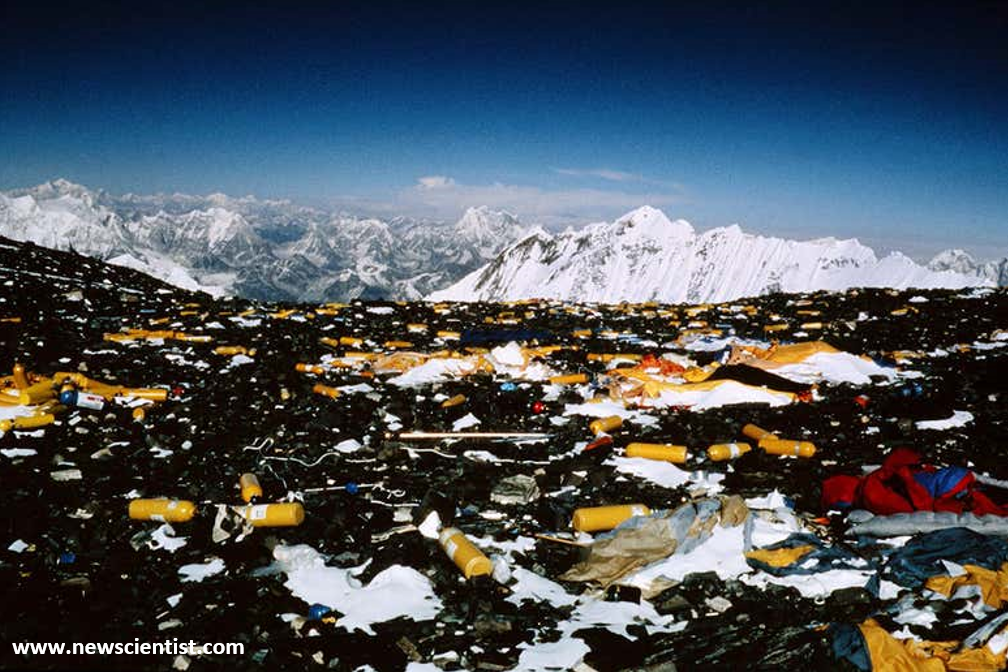Plastics are everywhere
Plastics are made from petroleum and millions of tons of plastic waste are nonbiodegradable and inappropriately disposed thereby constituting sanitary and environmental nuisance to the society. When they are dumped into drainages and water bodies, they pollute the environment, contaminate aquatic habitats and harm aquatic animals. The plastic waste increases by approximately 5% a year continuously and another 33 billion tons of plastic will be accumulated by 2050 (1).
Plastic wastes become a planetary threat or global plastics crisis already by affecting nearly every marine and freshwater ecosystem globally. There are around 8.3 billion tons of plastics produced since the 1950 and 79% of it ended in landfills or leaked into the environment. From the Marina Trench to Mt. Everest, there is virtually no place on earth which is left untouched by plastic pollution (2).
At least 14 million tons of plastic are end up in the ocean with plastic debris as the most abundant type of litter in the ocean. 80% of all plastic debris found from surface waters to deep sea sediments (3) and mostly located near popular tourist destinations and densely populate areas. The main sources of plastic debris found in the ocean are land-based, coming from urban and stormwater runoff, sewer overflows, littering, inadequate waste disposal and management, industrial activities, tyre abrasion, construction and illegal dumping as well as originates primarily from the fishing industry, nautical activities and aquaculture. These plastic breaks down into small particles called microplastic and nano-plastic under the influence of solar UV radiation, wind, currents and other natural factors.
The small size plastics makes them easy for marine life to ingest accidentally which could cause severe injuries and death. Moreover, Researchers in Germany are warning that the impact of microplastics in soils, sediments and freshwater could have a long-term negative effect on such ecosystems. They said that the terrestrial microplastic pollution is much higher than marine microplastic pollution – estimated at four to 23 times higher, depending on the environment (4).
Plastics are everywhere and we should emphasize to reduce plastic pollution by minimizing and stopping the use of plastic daily.
Ref:
- M.Rochman, M.A. Browne, B.S. Halpern, et al., Classify plastic waste as hazardous, Nature, 494 (7436) (2013), pp. 169-171
- https://www.genevaenvironmentnetwork.org/resources/updates/plastics-and-the-environment/
- https://www.iucn.org/resources/issues-brief/marine-plastic-pollution
- https://www.unep.org/news-and-stories/story/plastic-planet-how-tiny-plastic-particles-are-polluting-our-soil
By: Moe Thazin Shwe, SOLEN Research Associate – IPC panel member
Edited by: Hendra WINASTU, SOLEN Principal Associate – IPC panel coordinator
Date: 18 January 2023
Article#: SOLEN-IPC-0008
The Former Article: https://solenvn.com/en/microplastic-to-our-gastrointestinal-microbiota/
The Latter Article: https://solenvn.com/en/solid-waste-degredation/



 Tiếng Việt
Tiếng Việt 日本語
日本語
Pingback: Microplastic to our gastrointestinal microbiota - Solen
Pingback: Solid waste degredation - Solen %
Pingback: Ảnh hưởng của hạt vi nhựa đối với các vi sinh vật tồn tại trong đường tiêu hóa của con người - Solen